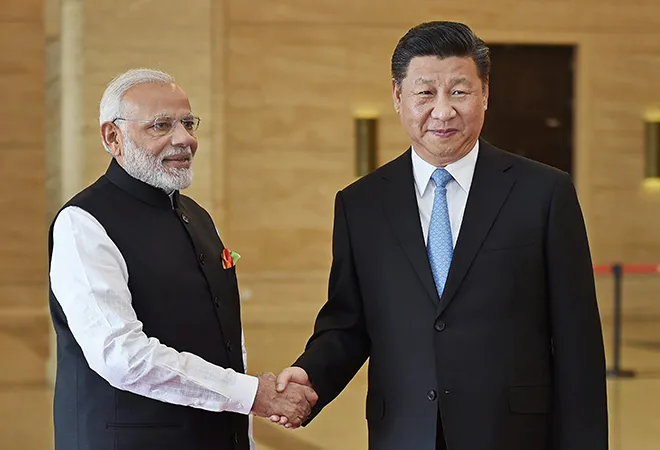Every five years, the Communist Party of China (CCP) Congress has become one of the most keenly watched events with China’s ascent in global inter-state hierarchy. Internal functioning of the Chinese polity remains highly opaque, so the CCP Congress gives outsiders an opportunity to discern political trends in one of the most influential countries of the world. While the rest of world still continues to struggle in trying to gain a comprehension of Chinese politics, what has been clear is the unprecedented centralisation of power under Xi Jinping in Beijing.
Xi was formally named the CCP’s “core” leader (hexin) in October, a title previously given to Mao Zedong, Deng Xiaoping, and Jiang Zemin, but not to his immediate predecessor Hu Jintao. The Congress will be more about this Xi consolidation than anything else. There is even speculation that Xi could be positioning himself for a third term as party chief with a strengthening of his grip on the party apparatus.
In this context, one of the most interesting developments out of China over the last few years has been Xi’s attempts to shake up the Chinese military and to set the civil-military balance in favour of the CCP.
In far-reaching military reforms announced by Xi in 2015, the PLA, the world’s biggest army, shed 300,000 troops down to two million. PLA’s four former headquarters – General Staff, General Political, General Logistics and General Armaments – were scrapped and 15 functional departments were set up to divide their powers. The PLA’s seven military commands were also reshaped into five theatre commands. But this was just the beginning.
Xi initiated sweeping anti-corruption measures soon after becoming the party general secretary in 2012, a campaign which has seen punishment being meted out to at least 13,000 military officers. This military reshuffle, which has seen two heavyweights in the powerful Central Military Commission (CMC) lose their commands just in the past month, will help Xi increase his dominance in the CMC.
Reform of the CMC underscores Xi’s absolute dominance in the army, which helped put the CCP in power. No other CCP leader, including Mao, has controlled the military to the same extent as Xi does today. Moreover, going far beyond the CMC chairmanship, Xi is keen to have a more hands-on operational role, resulting in the creation of the new post of commander-in-chief of the PLA joint battle command for Xi.
Defence reforms have been a priority for Xi who wants to make the PLA a lean, mean fighting force. In 2016 he downgraded the ground forces’ grip on power so that it would be at the same rank as the air force, navy, and rocket forces. Organisational reforms have resulted in the joint command between the service arms. In order to improve the PLA’s combat readiness and war-fighting capabilities, Xi’s reforms are aimed at transforming China’s military operations from a Russian-style, army-centric system toward a western-style joint command with young commanders manning top positions in the officer corps.
Xi’s military reforms will certainly make the Chinese military a more effective fighting force in the coming years. As it is because of its growing material capabilities, it is capable of potentially fighting and winning a war with overwhelming force against its weaker neighbours. Though there remain some concerns that Chinese military prowess remains largely untested, that too is changing with the Chinese military evacuating the country’s nationals from conflict zones and the Chinese Navy’s presence in the international anti-piracy mission in the Gulf of Aden.
Not surprisingly, the changes will have an impact on an already lopsided India-China military balance. Indian defence reforms continue to be a work in progress and serious efforts still lag behind the requirements of the contemporary challenges and war-fighting. The three services continue to undercut one another in emphasising jointery and one-upmanship remains the norm. The political leadership remains shy of pushing through the much-needed defence reforms. While the growing material imbalance between China and India remains a problem, it pales in comparison to the structural and organisational changes that are needed to make Indian defence forces truly cutting edge. Indian polity’s obsession with Pakistan means that it continues to ignore the far-reaching changes taking place in China.
Hopefully, as Xi consolidates his power even further this week, Indian policy makers and defence planners can rise from their slumber to take on a China which is getting better by the day at mobilising its hard power to achieve its foreign policy and national security objectives.
This commentary originally appeared in Hindustan Times.
The views expressed above belong to the author(s). ORF research and analyses now available on Telegram! Click here to access our curated content — blogs, longforms and interviews.




 PREV
PREV


